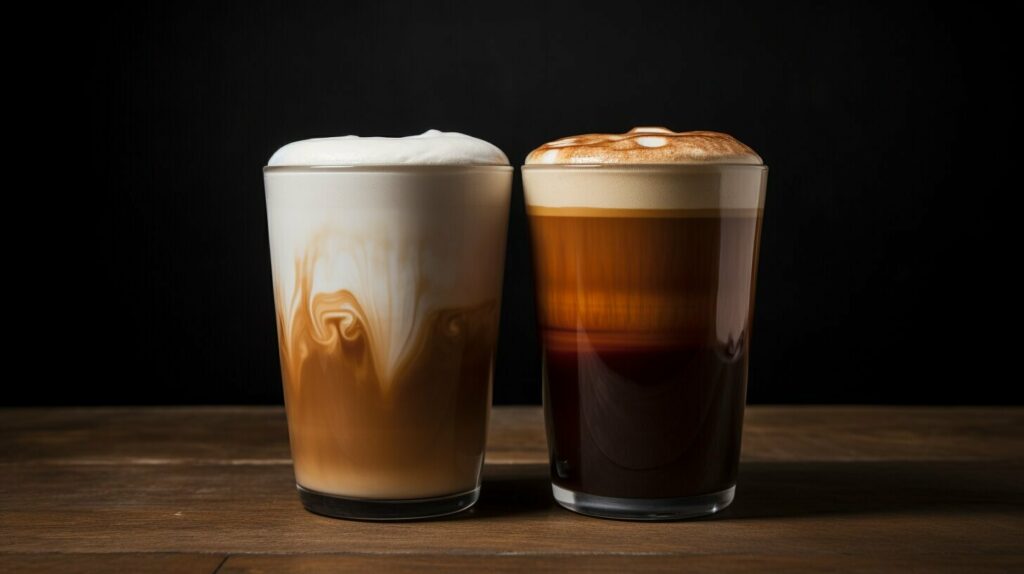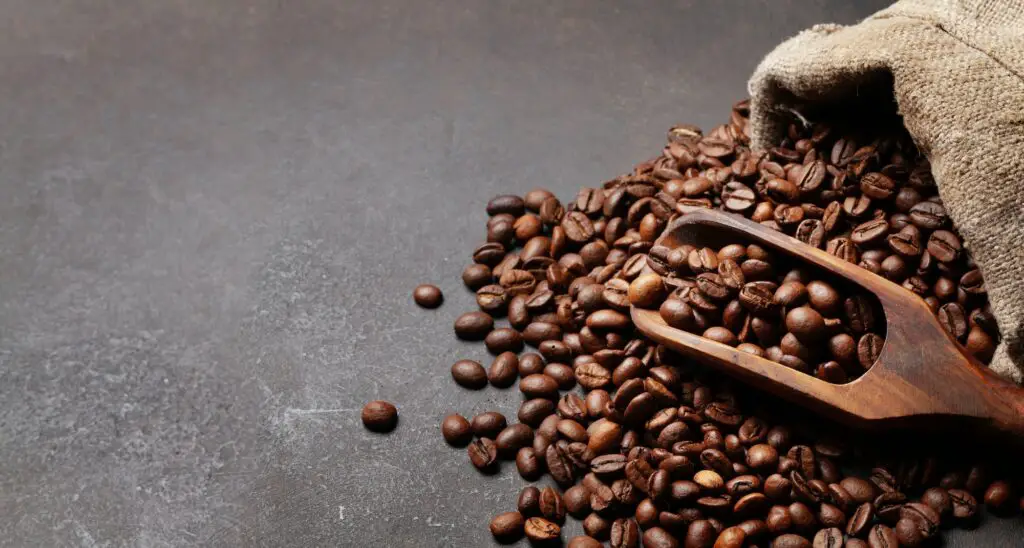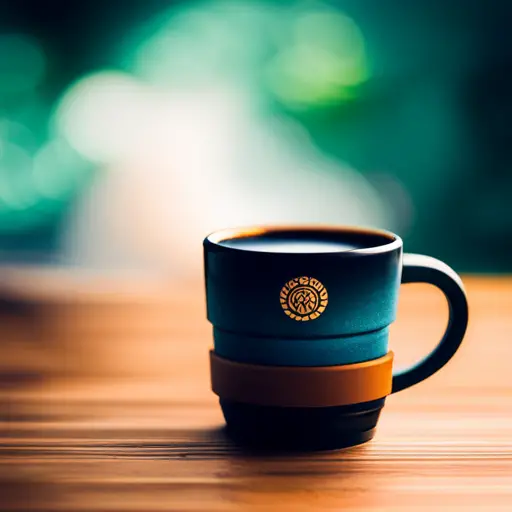Have you ever tried Bosnian coffee, also known as bosanska kafa? This traditional drink from Bosnia and Herzegovina has been enjoyed by Bosnians for centuries and is an important part of the country’s cultural heritage. The Ottomans brought the art of coffee-making to the Balkan region, and Bosnian coffee has been brewed in a unique way ever since. If you’re not a fan of coffee, you can also try the local tea or espresso.
To make Bosnian coffee, also known as bosanska kafa, finely ground coffee beans are slowly boiled in a traditional copper pot called a džezva by Bosnians. The resulting brew is strong and full-bodied, with a thick layer of foam on top, similar to espresso. It’s typically served with a small glass of water to cleanse the palate between sips.
Bosnian coffee, also known as kava or kahva, is a popular drink in Herzegovina. It’s not just about the taste, but also the experience of using a djezva to brew and serve the coffee. Drinking Bosnian coffee is a social activity that brings people together to chat, relax, and enjoy each other’s company. So if you’re looking for a delicious new way to connect with others and experience Balkan culture, give Bosnian coffee a try!
The Traditional Recipe for Making Bosnian Coffee
Ingredients and Tools
To make Bosnian coffee, you will need finely ground coffee beans, water, and sugar (optional). You will also need a special copper pot called “džezva” or “fildžan,” which is similar to the Turkish coffee pot. This traditional Herzegovina drink requires a few simple steps to prepare in the djezva.
Brewing Method
- Fill the fildžan with cold water.
- Add one teaspoon of ground coffee per drink into the water. If you like your coffee sweet, add sugar to taste. Don’t forget to step up your game by creating some foam and taking a satisfying sip!
- Place the džezva or bosnian coffee set on low heat and slowly bring the turkish coffee in the coffee pot to a simmer.
- As it heats up in the coffee pot, stir occasionally the coffee grounds mixture until the step when it starts to foam. Pour into your coffee cup and enjoy!
- Once the coffee pot boils over three times, remove it from heat immediately. Make sure to add the coffee grounds in the first step to prevent excessive foam.
Tips for Perfect Bosnian Coffee
- Use freshly roasted beans for maximum flavor.
- Grind the coffee grounds as finely as possible just before brewing in a coffee pot or Bosnian coffee set for the perfect cup of Turkish coffee.
- Use cold water instead of hot water for better extraction when making coffee with coffee grounds in a coffee pot or Bosnian coffee set.
- Do not stir too much once it starts boiling in the coffee pot; let it settle naturally.
Serving Bosnian Coffee
Bosanska kafa or kava is traditionally served in small cups called “fildžani.” It is often accompanied by rahat lokum or Turkish delight. For a more complete experience, consider using a Bosnian coffee set and coffee pot.
Importance of Quality Coffee Beans in Making Bosnian Coffee
The Role of Coffee Beans in Making Bosnian Coffee
Bosnian coffee is a traditional beverage that has been enjoyed by many for centuries. It is a staple drink in Bosnia and Herzegovina, and it is known for its rich flavor and aroma. One of the essential factors that contribute to the taste of Bosnian coffee is the quality of coffee beans used.
High-Quality Beans are Essential for a Rich Flavor
The quality of coffee beans used in making Bosnian coffee plays an important role in determining its taste, aroma, and strength. High-quality beans produce a rich flavor with a smooth finish. On the other hand, low-quality beans can result in a bitter or sour taste that can ruin your cup of coffee.
Arabica Beans are Commonly Used in Making Bosnian Coffee
Arabica beans are commonly used in making Bosnian coffee because they have a mild yet complex flavor profile. These beans have lower acidity levels than other types of coffee beans, which makes them perfect for brewing strong but smooth-tasting coffee. Arabica beans have a pleasant aroma that adds to the overall experience when drinking Bosnian coffee.
Freshly Roasted Beans Provide the Best Taste
Freshness is another crucial factor to consider when selecting high-quality coffee beans for your Bosnian coffee. Freshly roasted beans provide the best taste as they retain their natural oils and flavors better than stale or old ones. Therefore, it’s recommended to buy whole bean coffees and grind them just before brewing to ensure maximum freshness.
Step-by-Step Guide for Making Bosnian Coffee at Home
1. Heat the Water
Fill a cezve or small pot with cold water and place it on the stove to heat up. Use filtered water if possible, as it will result in a better-tasting coffee.
2. Add Coffee and Sugar
Once the water is hot, add finely ground Bosnian coffee to the cezve or pot. For every cup of water, use one heaping teaspoon of coffee. If you prefer your coffee sweet, add sugar to taste.
3. Heat Slowly
Place the cezve or pot back on the stove and heat slowly over low heat. Do not stir the mixture; instead, let it heat until bubbles start forming around the edges.
4. Boil Over Three Times
When bubbles start to form around the edges of the cezve or pot, remove it from heat and let it rest for a few seconds before returning it to low heat again. Let it boil over three times (known as “preventing”), then remove from heat.
5. Serve and Enjoy
Pour your freshly brewed Bosnian coffee into small cups called fildžan and serve immediately while still hot.
Making Bosnian coffee may seem simple but requires patience and attention to detail to get that perfect cup every time!
Preparing Bosnian Coffee Without Traditional Equipment
French Press as an Alternative
If you don’t have a cezve or pot to prepare Bosnian coffee, a French press can be an excellent alternative. It is a convenient and easy-to-use tool that can produce a similar taste to traditional preparation.
To use a French press, start by heating water in a kettle until it reaches boiling point. Meanwhile, grind your coffee beans finely. Use one tablespoon of ground coffee for every small cup of Bosnian coffee you want to make.
Once the water is boiled, pour it into the French press and add the ground coffee. Stir gently and let it sit for four minutes. Then, push down the plunger slowly and pour the coffee into your cup.
Follow Traditional Steps
When using an alternative tool like a French press, it’s essential to follow the traditional steps of Bosnian coffee preparation. This means using finely ground coffee and allowing it to steep for several minutes before serving.
The process involves bringing water to boil in a cezve or pot and adding finely ground coffee along with sugar (if desired). The mixture is then stirred gently over low heat until it starts to foam. Once removed from heat, let it rest for one minute before returning it back on low heat again until it foams once more.
Strain Before Serving
While using a French press can produce similar results to traditional preparation, there may be some residual grounds left in your cup after pouring. To avoid this, strain your brewed Bosnian coffee through a fine mesh sieve before serving.
This will ensure that any leftover grounds are removed from your drink, leaving you with smooth and flavorful Bosnian-style coffee.
Adding Sugar and Milk to Your Bosnian Coffee
Adding Sugar
Bosnian coffee is known for its strong and robust flavor, which can be balanced out with the addition of sugar. There are two ways to add sugar to your Bosnian coffee: during preparation or after brewing.
During Preparation
To add sugar during coffee pot preparation, you will need sugar cubes or sugar water. Here’s how:
- Place a teaspoon of sugar in a cezve (a small copper or brass pot used for making Bosnian coffee).
- Add hot water and stir until the sugar dissolves.
- Add the ground coffee and continue with the brewing process as usual.
Adding sugar during preparation ensures that it is evenly distributed throughout the coffee.
After Brewing
If you prefer to add sugar after brewing, simply place a teaspoon of sugar in your cup before pouring the brewed coffee over it. Stir until the sugar dissolves.
Adding Milk
Milk is not traditionally added to Bosnian coffee, but some people enjoy a creamier taste and texture. Here are some options for adding milk:
- Cream: To enhance the flavor of your coffee, you can add cream instead of milk to your coffee pot.
- Foam: You can froth up milk using an espresso machine or handheld frother and spoon it on top of your Bosnian coffee.
- Sweetened Condensed Milk: This can also be used as a substitute for regular milk if you prefer a sweeter taste in your coffee pot.
When adding milk, make sure to do so after brewing your Bosnian coffee as it may interfere with the brewing process if added beforehand.
Sharing the Joy of Bosnian Coffee with Others
In conclusion, making Bosnian coffee is a delightful experience that you can share with your friends and family. By following the traditional recipe and using high-quality coffee beans, you can enjoy a rich and flavorful cup of Bosnian coffee in the comfort of your own home.
Remember to take your time when preparing the coffee, as it is an essential part of the process. You can also experiment with adding sugar and milk to find your preferred taste.
Overall, making Bosnian coffee is a unique way to experience Balkan culture and hospitality. So why not invite some friends over for a cup of Bosnian coffee today?
FAQs
Is Bosnian coffee strong?
Yes, Bosnian coffee is known for its strong flavor.
Can I use any type of coffee beans?
No, it’s important to use high-quality Arabica beans for the best results in your coffee pot.
Do I need special equipment to make Bosnian coffee?
While traditional equipment such as a dzezva is preferred, you can still make Bosnian coffee using a small pot or saucepan.
How much sugar should I add?
It depends on personal preference when using a coffee pot. Start with one teaspoon and adjust accordingly.
Can I add milk to my Bosnian coffee?
Yes, adding milk is common in Bosnia. However, it’s important to heat the milk separately before adding it to the coffee.












